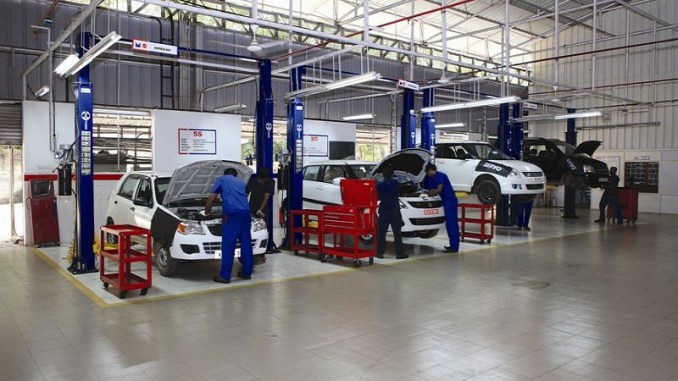All Categories
Featured
Proper tire maintenance is essential to prolonging the life of your lorry and making certain a smooth and safe driving experience. 2 of one of the most important tire solutions are tire turning and alignment. These services not just avoid early tire wear however additionally boost handling, gas efficiency, and overall safety and security. If you're unfamiliar with what tire rotation and alignment entail, below's an in-depth consider why they matter and how they profit your automobile.
What Is Tire Turning? Tire rotation refers to moving your tires from one setting to one more to ensure they put on evenly. The factor tire turning is essential is due to the fact that not all tires use the same method. In front-wheel-drive vehicles, for instance, the front tires take care of both guiding and power, that makes them break faster than the rear tires. The rear tires put on differently in rear-wheel-drive and all-wheel-drive automobiles.
By revolving your tires frequently, you can stabilize out the wear across all 4 tires. This assists them last longer and allows for even more even traction, boosting handling and security. A lot of makers recommend turning your tires every 6,000 to 8,000 miles or based on the lorry's guidebook.
What Is Tire Alignment? Tire alignment, likewise called wheel placement, describes the procedure of adjusting the angles of your vehicle's wheels to fulfill the maker's requirements. The objective of placement is to make sure that all four tires are aiming in the appropriate direction and at the appropriate angles, which permits ideal handling, safety, and tire life.
There are 3 major positioning angles that are changed during a positioning check:

Camber: The tilt of the wheels when viewed from the front. If the camber is off, it can lead to uneven tire wear, as the tire will certainly not make full contact with the road surface. Wheel: The angle of the steering axis when seen from the side. Appropriate wheel alignment guarantees that your automobile is secure when driving straight and that your guiding wheel go back to its typical placement after a turn. Toe: The angle at which the tires direct internal or exterior when viewed from above. Inaccurate toe placement can trigger the tires to drag, causing uneven wear and lowered fuel performance. Misalignment can take place gradually because of normal driving or from hitting barriers like visuals or potholes. If your alignment is off, it is essential to obtain it inspected and remedied to stay clear of issues down the roadway.
Why Tire Turning and Alignment Issue. Raised Tire Life:. Normal tire turning ensures also tire wear, assisting you obtain the most gas mileage out of your tires. Irregular wear can trigger you to change tires prematurely, which can be costly. When your tires put on evenly, they last longer, saving you cash in the long term.
Enhanced Lorry Handling:. Proper alignment keeps your vehicle driving straight and steady, especially at higher speeds. Imbalance can create your auto to draw away, making it harder to guide. By keeping your tires aligned, you guarantee your lorry deals with more smoothly and predictably.
Enhanced Safety And Security:. Tires that are not rotated or lined up correctly can put on unevenly, affecting just how well your lorry quits and edges. For instance, misaligned tires or tires with irregular wear patterns may trigger reduced traction, specifically in wet or icy conditions, bring about a greater risk of mishaps.
Much Better Fuel Efficiency:. Tires that are misaligned can produce rolling resistance, implying your engine has to function harder to relocate the auto. This increases gas consumption and reduces your automobile's fuel effectiveness. Appropriate tire alignment decreases rolling resistance, which can enhance gas mileage.
Indicators Your Tires Need Turning or Placement. While it's essential to remain on top of routine tire rotations and placements, there are a few indicators that might show your tires need focus:
Uneven Wear: If you see that tire is a lot more worn than the others, it's most likely time for a rotation. Guiding Pull: If your auto draws away or feels off-center, maybe a sign of misalignment. Resonances: If you really feel vibrations in the guiding wheel or the car, it can be because of a placement problem. Noisy Tires: Screeching or loud tires could indicate inappropriate turning or misalignment. If you observe any one of these indications, it is very important to get your tires examined by a professional.
Exactly How Often Should You Rotate and Align Your Tires? Tire turning must normally be done every 6,000 to 8,000 miles, though this can vary based on your driving problems and the type of car you drive. It's also an excellent concept to have your tires turned whenever you get an oil adjustment.
For positioning, you should have your tires straightened every 1-2 years, or a lot more frequently if you discover any issues with managing or uneven tire wear. If you struck a big split or aesthetic, it's a good idea to obtain a positioning examine as soon as possible.
Verdict: Routine Maintenance for Optimum Efficiency. Tire turning and alignment are two basic however crucial services that maintain your automobile running efficiently, efficiently, and securely. By revolving your tires on a regular basis and maintaining your wheels properly straightened, you can extend the life of your tires, improve handling, and enjoy much better gas performance.
Latest Posts
Make Your Desire Fence a Truth with Montana Fencing Financing
Unwind with the very best Pleased Hour around at The other day's Tavern
Explore Endless Possibilities